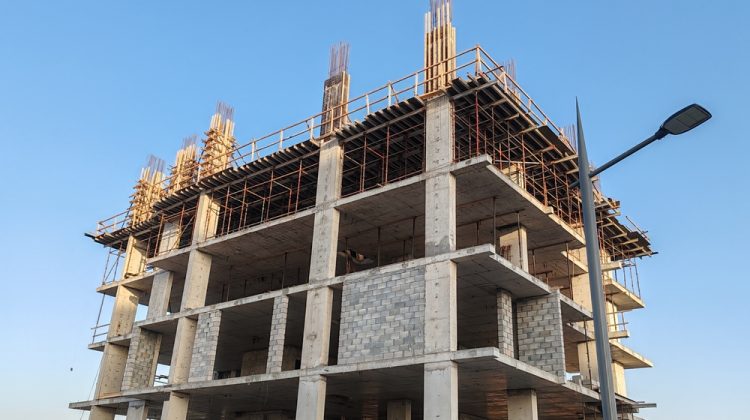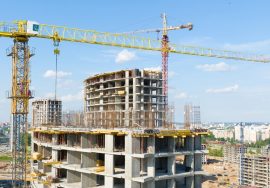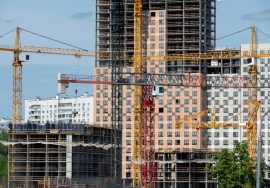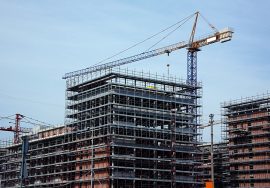
Greenhouse Gas Emissions in Construction: Reducing Carbon Footprint
Greenhouse Gas Emissions in Construction: A Path Toward Sustainability
The construction industry plays a crucial role in global development, but it also contributes significantly to greenhouse gas emissions. From manufacturing building materials to on-site energy use, the sector accounts for nearly 40% of global CO₂ emissions. Reducing greenhouse gas emissions in construction is essential to achieving climate goals and promoting sustainable growth.
In this blog, we’ll explore the causes, impacts, and effective strategies to minimize greenhouse gas emissions in construction, aligning with India’s sustainability commitments and green building initiatives.
Understanding Greenhouse Gas Emissions in Construction
Greenhouse gas emissions in the construction industry stem from several key activities, including the production of materials like cement, steel, and glass, as well as transportation and energy consumption on construction sites. Cement alone is responsible for about 8% of global CO₂ emissions due to its high energy requirements and chemical processes.
In India, the rapid pace of urbanization and infrastructure development makes addressing greenhouse gas emissions in construction more critical than ever. The government and industry leaders are increasingly focusing on sustainable construction standards to reduce environmental impact.
Major Sources of Emissions in the Construction Sector
1. Material Production
The manufacturing of building materials such as cement, concrete, and steel consumes vast amounts of energy. These materials contribute directly to greenhouse gas emissions through both fuel combustion and chemical reactions during production.
2. Transportation and Equipment
Heavy machinery, trucks, and construction vehicles run on fossil fuels, leading to substantial greenhouse gas emissions in construction. Transporting materials from production sites to building locations further adds to the carbon footprint.
3. On-Site Energy Use
Construction sites often depend on non-renewable energy for operations like welding, lighting, and machinery use. This dependence increases overall greenhouse gas emissions, highlighting the need for energy-efficient alternatives.
Sustainable Strategies to Reduce Emissions
1. Use of Low-Carbon Building Materials
Switching to low-carbon building materials such as fly ash concrete, recycled steel, and bamboo can significantly cut down greenhouse gas emissions. These materials require less energy to produce and offer long-term durability.
2. Adoption of Green Construction Practices
Sustainable building design, energy-efficient equipment, and waste management can help minimize greenhouse gas emissions. Integrating green technologies such as solar panels, rainwater harvesting, and passive cooling systems enhances energy efficiency.
3. Efficient Transportation and Logistics
Using electric or hybrid vehicles for material transport and optimizing delivery routes can reduce fuel use and lower greenhouse gas emissions. Prefabrication also limits on-site energy consumption and material waste.
4. Renewable Energy Integration
Incorporating renewable energy sources such as solar and wind power into construction operations reduces dependency on fossil fuels. This step directly contributes to reducing greenhouse gas emissions and supporting a cleaner energy transition.

Government Policies and Green Building Certifications
The Indian government has introduced several policies to curb greenhouse gas emissions. Initiatives like the National Mission on Sustainable Habitat and Energy Conservation Building Code (ECBC) promote eco-friendly designs and efficient resource use.
Green certifications such as LEED (Leadership in Energy and Environmental Design) and IGBC (Indian Green Building Council) encourage builders to adopt sustainable practices and reduce emissions. (Learn more about LEED standards from IGBC India.)
The Role of the Construction Industry in Climate Action
Every stakeholder in the construction process—from architects to builders—has a role in reducing greenhouse gas emissions. By prioritizing energy efficiency, material innovation, and waste reduction, the industry can transition toward a low-carbon future.
If you are looking to implement sustainable and emission-reducing solutions in your projects, connect with our experts at AMS India for customized eco-friendly construction strategies.
Conclusion: Building a Greener Tomorrow
Reducing greenhouse gas emissions is no longer a choice—it’s a necessity. The construction sector has immense potential to lead the fight against climate change through innovation, responsible material use, and sustainable practices.
By embracing eco-friendly technologies and low-carbon strategies today, we can build structures that are not just strong and efficient but also kind to our planet.
Read more related articles to enhance your knowledge and make informed decisions
Cost-Effective Modular Construction: Fast, and Sustainable Building Solutions
Smart Modular Buildings: Innovative, Efficient, and Sustainable Construction








